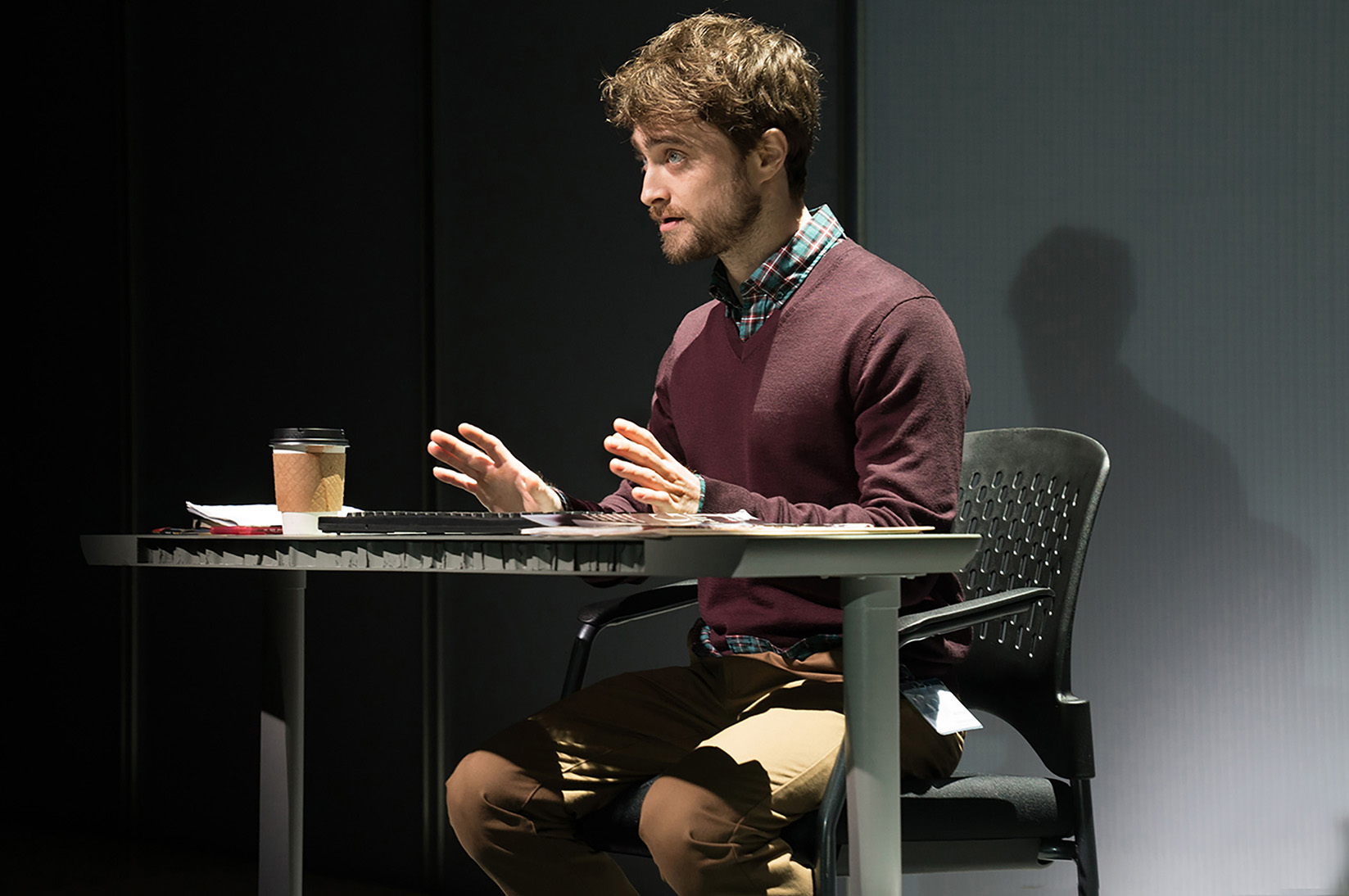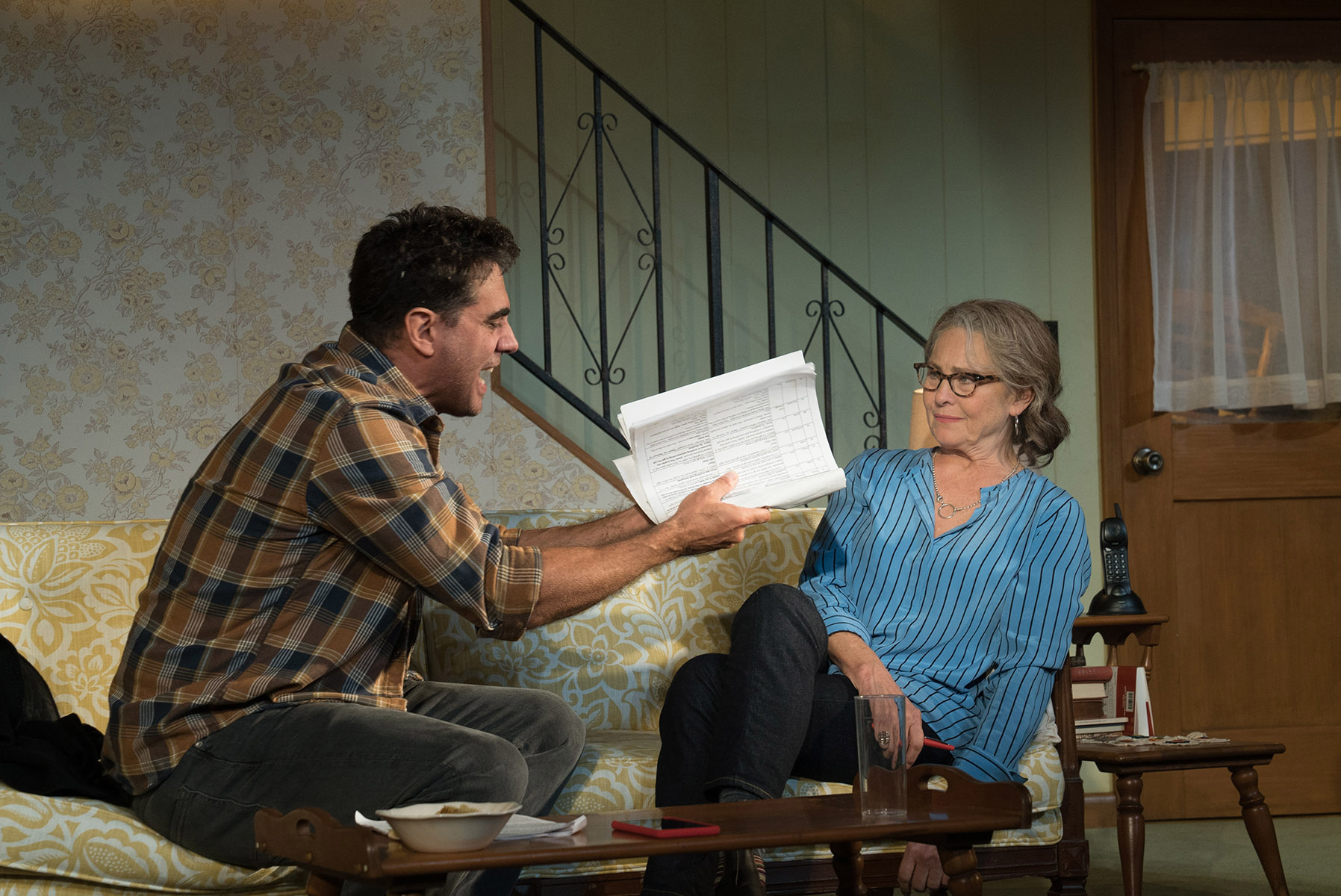As the first Broadway show to have an all-female design team, The Lifespan Of A Fact broke a theatrical glass ceiling. But the question is: Why did it take so long? Hopefully some day, it will be the norm rather than an oddity, but in the meantime, scenic designer Mimi Lien, lighting designer Jen Schriever, projection designer Lucy McKinnon, sound designer Palmer Hefferen, and costume designer Linda Cho have created their own little piece of Broadway history. Live Design chats with Lien, as part of a series on all the designers, from their take on being part of this groundbreaking team to their work on the show. Read about the lighting, projections, sound, and costumes here.
Live Design: Can you describe the sets for this play?
Mimi Lien: The play takes place in two very distinct locations — the glossy magazine office, and John's mother's rather homely house in Las Vegas. For the office scenes, the space is a shallow lane downstage in front of a translucent polycarbonate wall. There are panels (also polycarbonate) and wagons that move us, as if on a conveyor belt, to and from different locations in the office. The decor is minimal and sleek, and we are only seeing a part of the whole, as indicated by desks, which are sliced in half, etc. The house in Las Vegas, on the other hand, is a full-on house with kitchen sink, couch, stairs, and a back porch. John's mother's house would have been built in the 60s, so there are mid-century details, vintage wallpaper, and an avocado, yellow ochre, and pink color palette.

LD: What is your process for designing a new play, and how does the script and, in this case, the comedy elements inform your designs?
ML: The rhythm of the play as written was crucial to determining the way that the design would work. There is effervescence and a comedic tempo to the office scenes, which made us think of the conveyor belt-esque movement as delivery mechanism. And the arrival of the Vegas house is a huge comedic moment which is written into the script. I wanted there to be as much contrast as possible between it and the previous world, as there is great delight to see the previously thought of “high-status” character in such a “low-status” home. There are also these emails, which do a lot of the storytelling, that need to be projected, so in the interest of coming up with a projection surface that felt architecturally congruent with the world, I came up with these panels which are made with switchable privacy glass; it's a film that gets applied to glass so that it can go from transparent to opaque with the flip of a switch. This felt both practical and dramaturgically appropriate; a material that deals with transparency in a play about facts.

LD: What does it mean to you to be part of Broadway's first all-female design team?
MD: Certainly, my first thought when [director] Leigh [Silverman] told me this was, "Really??? That seems crazy."
And then my second thought was, "Hell yes—sign me up!"